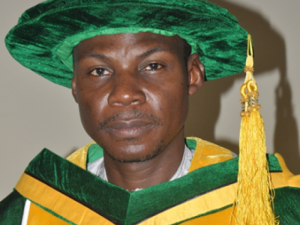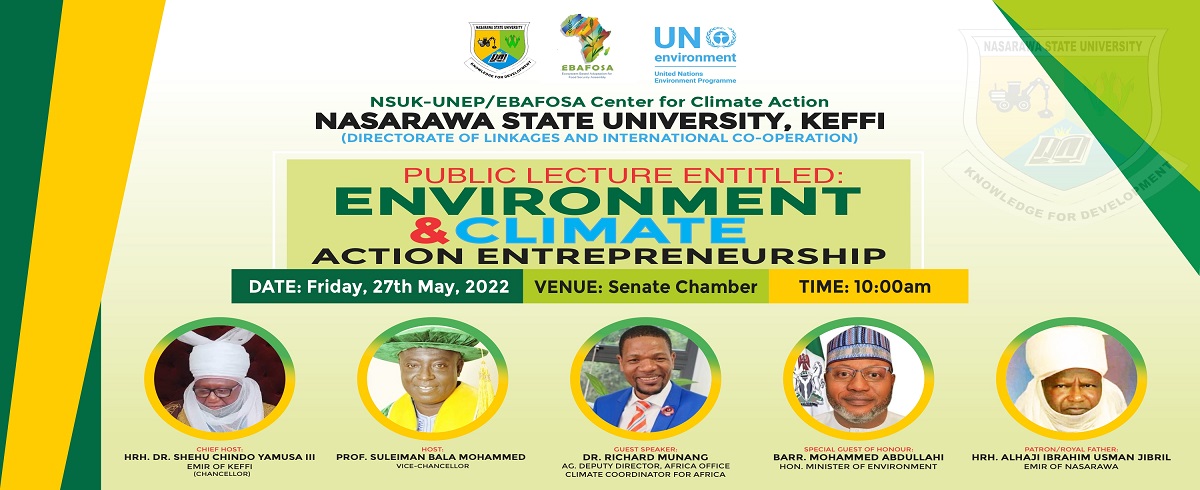
The University library is essentially a centre for academic and intellectual activities of the institution. Its main goal is to satisfy the scholarly and other informational needs of its immediate academic environments that are students, staff, researchers and the entire university community. Nasarawa State University Library is not an exception, to justify the heavy investment in it, the library strives to provide adequate resources in support of the learning process including materials for students’ background reading for essays, term papers and projects; provide relevant resources to meet the requirements of faculty specialists, and researchers; provide core resources to assist library users in their quest for self-development, and co-operate with other libraries through inter-library loans, to establish and develop a network of academic library resources which are at the disposal of all students and teaching staff. The provision of resources is not only to meet the immediate needs of students and faculty staff, but to help the University realize its strategic and long-term objectives of training and graduating men and women who are academically, professionally and morally sound.
The Nasarawa State University Library came into being in January, 2002 when the administration of Governor Alhaji (Dr) Abdullahi Adamu decided to establish a University during the 2001/2002 academic year. The premises of the former School of Preliminary Studies which gave way to the College of Arts, Science and Technology (CAST) is now accommodating the Nasarawa State University. The collection of CAST Library was used by NSUK students up to September, and the properties of the defunct CAST were inherited by the Nasarawa State Polytechnic. Everything, including library resources, furniture equipment and some staff were lost as at the date of final handover to the Polytechnic in November, 2002. The library opened its doors to the reading public on 3rd April, 2003. The Aggressive acquisition was therefore embarked upon to build up the collection and also space. At maximum capacity, the library as at that time could take up to 500 readers at a time and a book stock of 50,000 volumes. The building then was restructured and renovated, properly furnished and equipped to serve the academic needs of the institution. By February/March, 2004 the library extended its services to the Faculties of Law and Administration in Pyanku Campus as well as the Faculty of Agriculture in Lafia. With the movement of the two Faculties from Pyanku to the Main Campus in Keffi, the Library now has three (3) branches: Main, Law and Agricultural Libraries. Besides, the Main Library also houses the electronic library and a CBT Centre. The Main Library and Faculty of Law Library are located on the main campus in Keffi. Apart from the two (2) Faculty libraries mentioned above and the School of Postgraduate Studies e-library, other faculty libraries are in the rudimentary stage of development. These consist of a collection of books, and reading space, without a professional librarian to organise the collection. Under this category are the Faculties of Administration, Natural and Applied Sciences, Education, Environment, and Social Sciences. The Faculty of Arts has no faculty library but all the eight departments in the faculty have departmental libraries, these are; French, Arabic, English, History, Islamic Studies, Language/Linguistics/Hausa, Religious Studies and Theatre Arts Departments.
To be a world-class University library, providing timely information to support teaching, research, learning and relaxation.
- Providing information resources in varied formats: print and electronics, to support teaching, learning and relaxation.
- Preserve the collective wisdom of mankind, with special emphasis on works emanating from the University and Nasarawa State.
List of Staff
| Name | Portfolio |
|---|---|
| Dr. Abdulkadir Aliyu | University Librarian |
| Nuruddeen M. Maifata | Librarian I |
| Bala Kolo Mohammed | Assistant Librarian |
| Bashie Joseph Udida | |
| Danjuma Ali | |
| M. Galadima Abdullahi | |
| Muhammad Awwal Nasir | |
| A. Epu Alexandar | |
| Wilson Oserada |
List of Divisions
This division handles periodical which are publications that are serialized, for example journals, newspapers, magazines, etc which are issued weekly, monthly, quarterly or yearly as the case may be. A certain number of issues of these publications make a complete volume which when gathered together and bound, becomes a reference resource. All bound volumes are shelved in the stack room, while, the current issues are displayed and are not to be borrowed or taken out of the library.
This section was set up to provide access to the databases subscribed by the library through a strong Internet connection, both LAN and Wi-Fi. Currently, there are 300 computer systems split in three rooms both serving as e-library, a virtual library and information literacy room. The library subscribes to several electronic databases through Tetfund and other allocations; some of the databases in the library subscription list include the following: ScienceDirect, Jstor, HeinOnline, Lawpavillion, Legalpedia, eGranary Digital Library and Ebscohost. In addition to the subscribed databases, the library over the years has been enjoying the use of open access resources.
This is the largest division in the library in terms of staffing, reading space and information resources. Another name for it is Circulation; the staff of the division maintains the Circulation desk, book shelves, charge and discharge books, charge fines for overdue books, take statistics of users, check users entry and exit etc. This service point was in existence right from the inception of the library to date; the only difference is the change in nomenclature due to the advent of technology and the change in approach from system to user.
This is the oldest division in the library. Traditionally it is known as Technical Services or Collection Development. The services here are done behind the scene, which means only the library staff participates. All information resources must pass through this division. It starts with Selection, Ordering, Acquisition, Accessioning, Cataloguing, Classification and then finally shelving. Resources come into the library either through purchase, gift, exchange, donation, endowment or Tetfund intervention etc. Apart from processing information resources for end-users, the division also has the mandate of protecting and preserving them in the bindery unit. Since 2017, with the help of IT the division process all the resources brought it online rather than manual; copy cataloguing, migrating and domesticating classification data from external library databases.
As the name implies “refer”, the division that handles user’s enquiry, directly or indirectly, directly through question-answer session between the reference librarian and the user, while, indirectly through the consultation of reference resources for example Encyclopedia, Handbook, Yearbook, Dictionaries, Atlases, Bibliographies, Almanacs, Maps, Indexes and Abstracts etc The resources in this division are not meant to be taken out but to be consulted for quick reference purposes. With the advent of technology the e–components have been added lately in form of Encarta, Wikipedia, e-dictionary and online reference librarian.
Upcoming Workshop/Conferences


